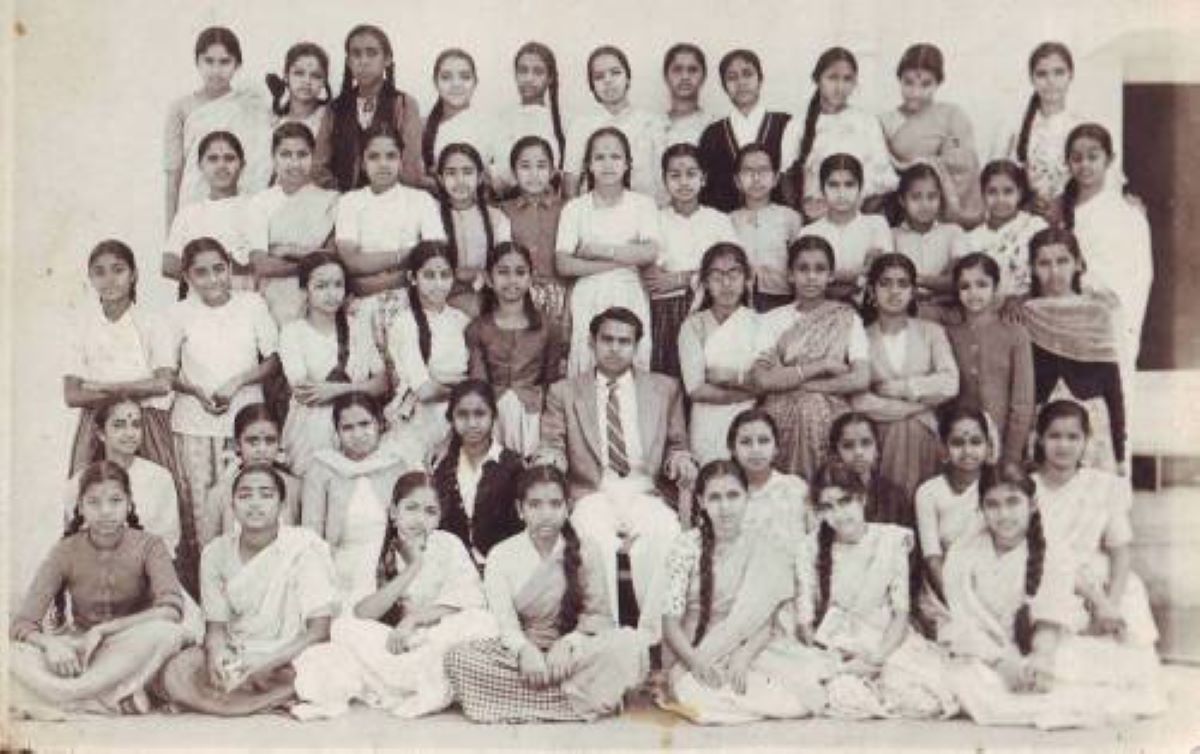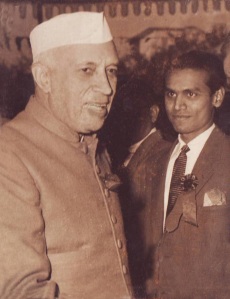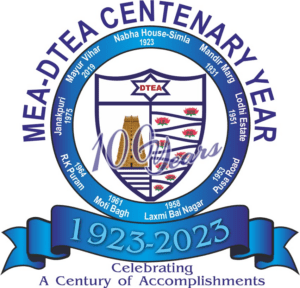There was a time when DTEA schools were never absent from the CBSE Delhi merit list. In 1962, a whopping 22 students made it to IITs just from Lodhi Estate.

DTEA Mandir Marg (Reading Road) school 1964 batch (S Natarajan)
Come 2023, and one of the oldest educational institutions in the Indian capital — a Tamil school that opened in 1923 with just one teacher and one student — will complete 100 years.
What began amid uncertainty but with great hopes was a dream-come-true for Delhi’s miniscule Tamil community that was making the city a new home to serve the British Raj and was worried about its children’s education.
Despite many hurdles, the experiment called Madrasi Education Association (MEA) succeeded beyond everyone’s expectations and blossomed into one of the most academically successful schools the capital ever had.
Some half a century after its birth, the school changed its name to the Delhi Tamil Education Association (DTEA) in lieu of a one-time grant promised by then Tamil Nadu Chief Minister M Karunanidhi.
The first DTEA school on Reading Road (now Mandir Marg) steadily expanded to six branches.
The seventh was a Tamil school in Janakpuri taken over by DTEA in 1975 and an eighth opened as late as 2020. The schools now collectively have some 9,000 students and over 500 teachers.
Retired teachers and ex-students recall their association with MEA/DTEA with visible pride. Many of them saw the school’s struggling years when classes were held under tents and any heavy rain would trigger an impromptu holiday.
The MEA founder-teacher was PH Sundaresa Iyer, a visionary who registered the body in 1919 and opened the school with one student in Simla, the British summer capital, in 1923. The school moved to Delhi the next year and got land on Reading Road in 1931.
Ironically, for someone who laid the foundation of a huge success story, Iyer had passed only Class X. His English was immaculate. Much later, it became known that he taught Tamil to Indira Gandhi when she lived with her father in Teen Murti House.
C Rajagoplachari, the last Governor General of India, formally opened the Mandir Marg DTEA school in 1946. Madras Chief Minister K Kamaraj inaugurated the Lodhi Estate school in 1955, four years after it opened.
Prime Minister Jawaharlal Nehru laid the foundation stone at Lakshmi Bai Nagar in 1960, two years after it began functioning. Madras Chief Minister M Bhaktavatsalam did so at Karol Bagh in 1963; the school was inaugurated six years later by Karunanidhi.
The branches in Moti Bagh and RK Puram opened in 1961 and 1964 respectively.
These areas in central and south Delhi were home to the Tamil community, which ballooned in the city after India’s Independence and whose members initially mostly served in the lower rungs of the Central government.
Money was a constant irritant in the years after Independence when salaries were low and most families had three or more growing children and just one earning member.
The first school came up with small voluntary contributions. Periodic souvenirs fetched advertisement revenue. Legends like MS Subbalakshmi, Lalgudi Jayaraman, and SP Balasubramanian gave concerts to raise cash. Money collected painstakingly led to full-fledged school buildings and well-stocked libraries.
The first batch of higher secondary students (Class 9–11) passed out in 1949.
All the schools started as primary or middle schools and subsequently added the school-leaving classes. The community valued education the most. This along with the commitment of the principals and the poorly paid but devoted teachers helped script an amazing saga.
Tamil was taught right from Class 1. Hindi began in Class 2. As long as school ended with Class 11, students could opt for Tamil or Hindi from Class 9.
The medium of instruction was English.
Considering the quality of education provided, learning in MEA/DTEA was virtually free in view of the meagre fees. No tuition fee was levied till Class 8. Donations were never sought.
“MEA and DTEA were a merger of government and public schools,” explained S Natarajan, one of the most successful principals who retired in 1991 and lives in Delhi.

Jawaharlal Nehru with S Natarajan, who later became a principal at the DTEA Lakshmi Bai Nagar school (Supplied)
“Our schools were like government schools because education was virtually free. They were like public schools because the medium of instruction was English and there was a focus on quality education.”
Right from the 1950s till the early 1970s, DTEA schools stood out among the 600-odd higher secondary schools in Delhi. Every year, the Central Board of Secondary Education (CBSE) announced the names of 20 toppers (Merit List) for the entire Delhi in each stream — Science, Commerce and Arts.
There was no year when DTEA was absent from the Merit List. In 1962, a whopping 22 students made it to IITs just from the DTEA Lodhi Estate school.
Some branches did not have a single failure in the school-leaving exam conducted by the CBSE.
It is no wonder that DTEA students easily took on their counterparts from the richer public schools. Many went on to become doctors, architects, scientists, chartered accountants, lawyers, bankers, business executives, journalists, IT wizards and government employees at all levels.
While most teachers were Tamil, many north Indians served MEA/DTEA with distinction. A few — including NK Sharma, who became the principal of one of the schools — learnt and spoke Tamil fluently. Books written by some teachers were prescribed in schools across Delhi.
Till the mid-1950s, MEA was the only south Indian school in the capital.
“DTEA schools may not have had the glitz of a public school but they had a mission to educate in the best possible manner,” said VV Narayanan, a former banker who now lives in Chennai.

DTEA schools will mark a century in 2023 (DTEA school website)
“The teachers were part of our family. There was no discrimination over class, caste or religion.”
Indeed, the MEA/DTEA schools were an extension of a student’s family. Most students and teachers in the early decades were Brahmins. During holidays, the schools hosted cultural and religious events.
Anuradha Ravi, now a Bengaluru resident who studied in DTEA from 1959 to 1970, said: “The teachers never discriminated, whether one was a joint secretary’s son getting dropped by car or an ordinary family’s son walking to school in slippers.”
All good things come to an end. Somewhere in the early 1980s, the DTEA schools began to slip up academically, for more reasons than one.
Once it happened, the fall was steady. As many Tamils began to move away, the schools began admitting non-Tamils in large numbers. Barring exceptions, most ex-students do not send their own children now to DTEA. But come 2023, all those who served or passed out from the schools will celebrate the well-deserved century!
(MR Narayan Swamy is a freelance journalist in New Delhi. He began his career more than four decades ago. He had a long innings in UNI, AFP, and IANS. His focus areas are diplomacy, politics, and spirituality, and he loves to read and review books. He is the author of three books on the Sri Lankan conflict)

Jul 26, 2024

Jul 26, 2024

Jul 24, 2024

Jul 24, 2024

Jul 19, 2024

Jul 18, 2024